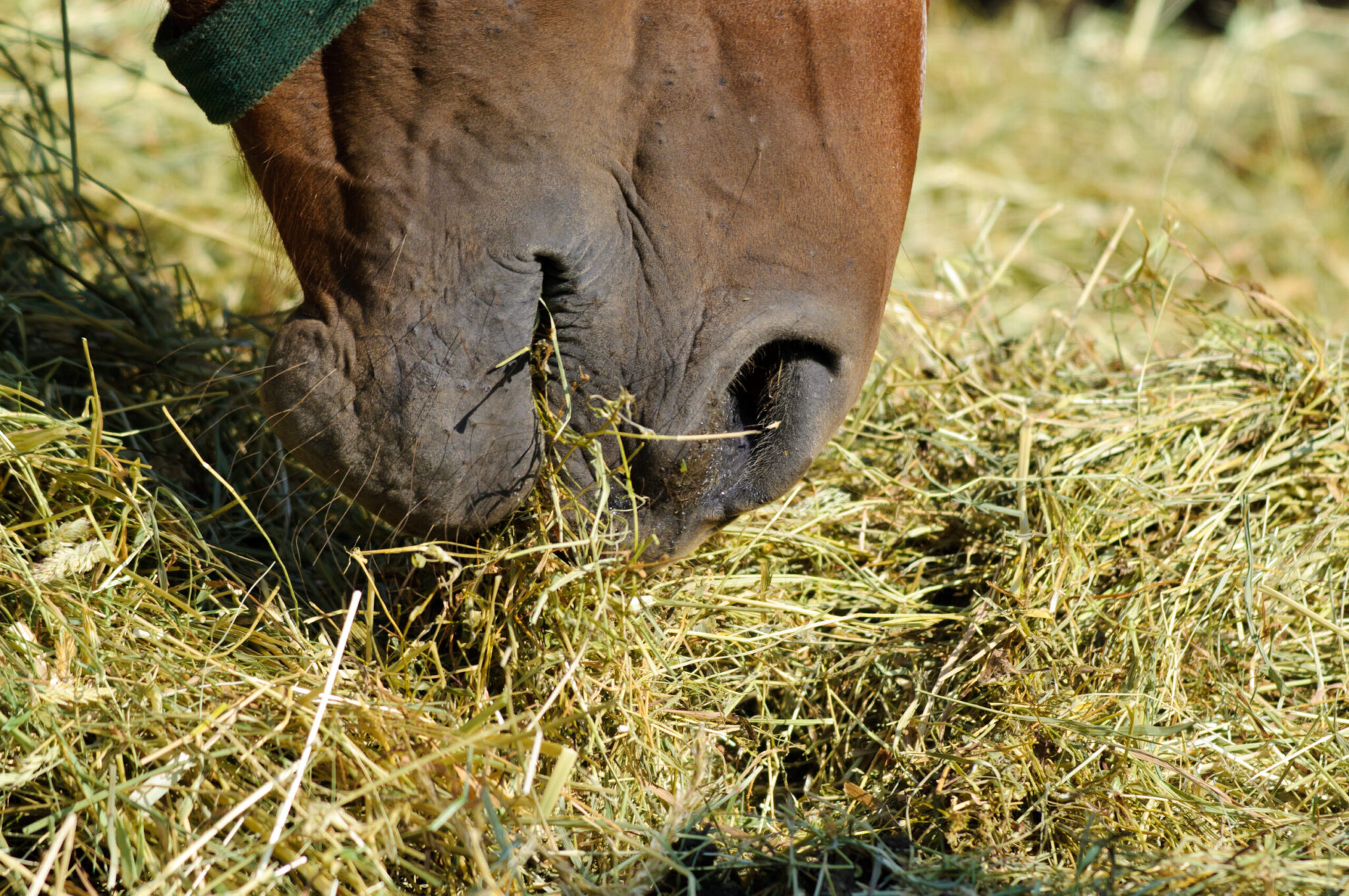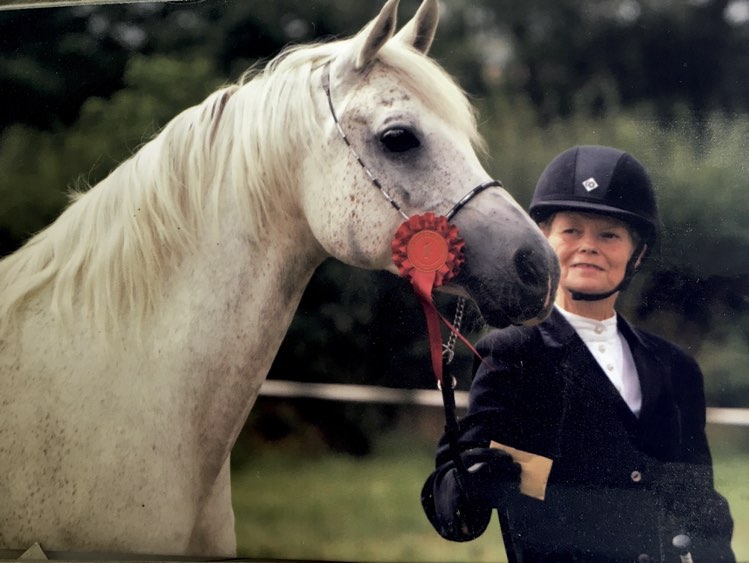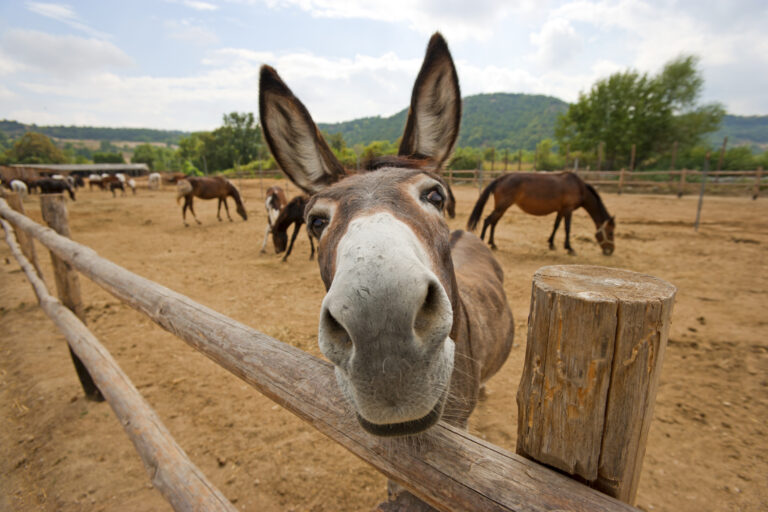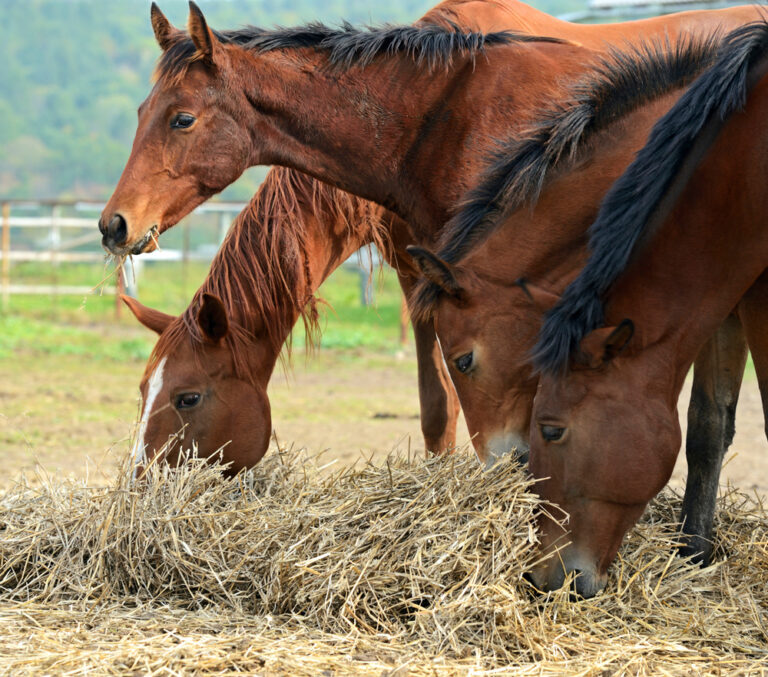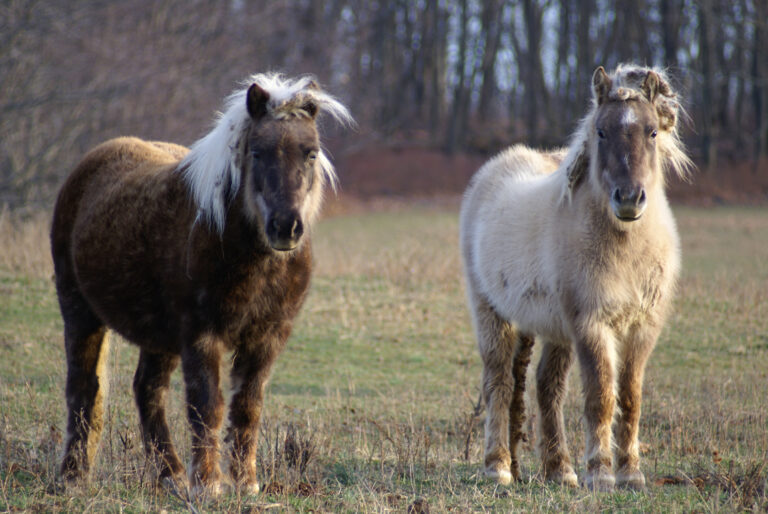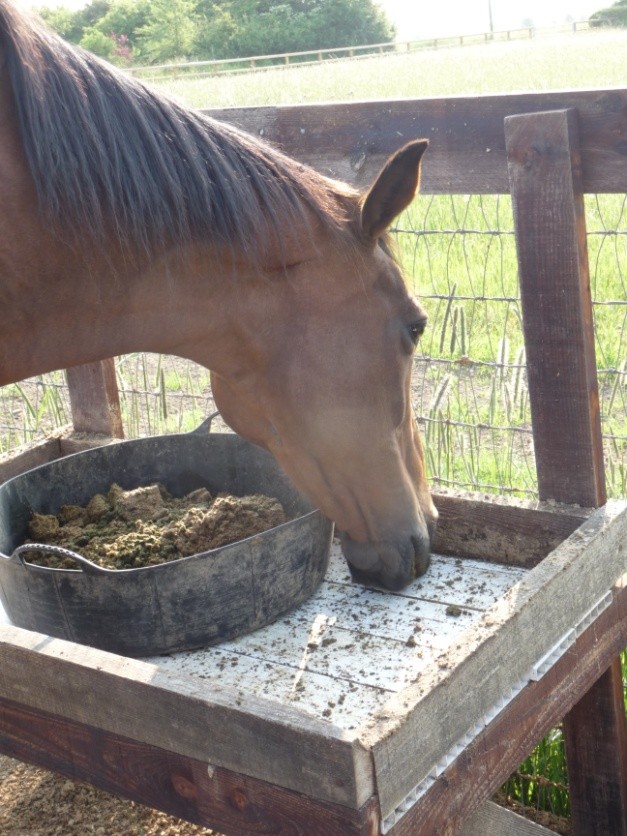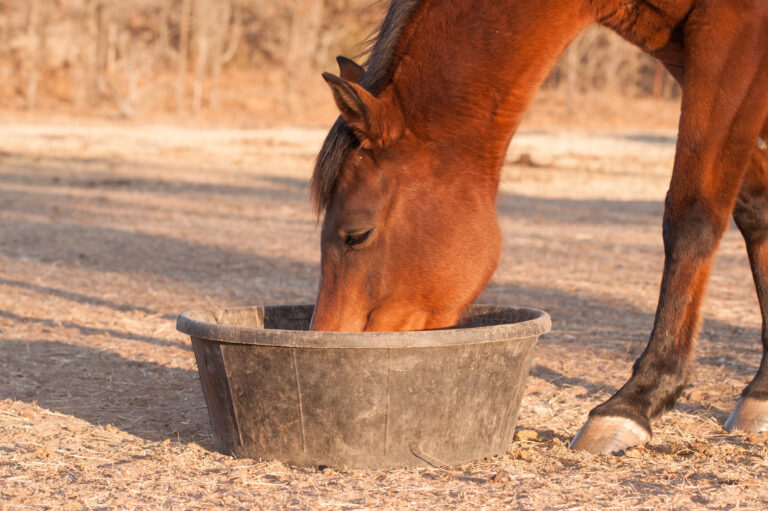Soaking hay is a practice that many horse owners use to reduce sugars in forages or remove respiratory irritants. During harvesting, hays accrue varying amounts of airborne respirable particles (ARP). These are composed of soil particles and microbial material. Inhalation of ARP is associated with airway disease in horses.
Full submersion of hay in clean water for complete wetting can reduce the number of ARP by around 60%. Leaving hay to soak for 30 minutes can reduce the number of ARP by around 90%.
Once soaked, hay should be fed immediately. This is to prevent microbial proliferation on soaked hay that has been set aside or allowed to dry out (to prevent some particles becoming ARP again).
Steaming of Horse Hay
Thorough steaming of hay for 60 minutes, however, effectively reduces ARP and kills most of the microbial contaminants. This prevents their proliferation for the short term.
Steaming, however, is ineffective in reducing hay contents of simple sugars and fructan. Together those comprise the water-soluble carbohydrates (WSC) in hay. The WSC plus starch constitute the non-structural carbohydrate (NSC) fraction of forage.
WSC and NSC and Soaking
Grass hays contain variable amounts of WSC (from 5% to greater than 30% of dry matter or DM), but they contain minimal starch.
Dietary NSC contents greater than 10% DM are currently not recommended to be fed to horses with insulin dysregulation (ID) and/or an increased risk of laminitis.
Reductions in hay WSC content after soaking are highly variable between different hays, soak times, and temperatures (range 5% to greater than 60%). Although soaking for 15-60 minutes in warm water can significantly reduce hay WSC content, greater losses can occur by extended soaking (6-16 hours).
However, even prolonged soaking might not reduce the WSC significantly in some hays. Currently, we don’t understand why this might be the case.
Note that short-term or even prolonged soaking will not automatically reduce the WSC content of your hay to below the levels recommended.
Hay Soaking Advice
If you need to feed hay with a WSC content of less than 10% of DM, it is preferable to start with a hay with as low a WSC as possible. The only way to determine WSC content is through testing (preferably by wet chemistry).
If the WSC levels are much greater than 10%, it might be advisable to source another hay with a lower WSC content. Otherwise, soak the hay in clean water (hay:water ratio of 1kg hay:12 litres or 3 gallons or more of water). Then re-test it to determine WSC levels.
Insulin responses are very individually variable. The recommended upper dietary limit of 10% WSC of forage DM for vulnerable animals is not universal. If it is important that your horse have a low insulin response, have your veterinarian test the horse’s blood insulin concentrations before and after eating soaked forage.
In cool weather (< 16o C), prolonged soaking might be appropriate. However, in hot weather, soak times should either be limited to 1 hour to discourage contaminating microbial growth or where longer soaking is necessary, hay can be steamed post-soaking to reduce subsequent microbial proliferation. Try to soak out of direct sunlight and always fully submerge the hay in the water.
Soaking hay results in losses of DM, digestible energy, as well as some vitamins, minerals, and amino acids. To prevent unnecessary or excessive weight loss, more initial hay needs to be fed to compensate for DM and energy losses. (This is in the range of 15%-30% more hay. We practically tend to use 20%.)
All animals fed a forage-only diet should be given a feed ‘balancer’ to mitigate against potential nutrient deficiencies. This is especially important for those horses on restricted rations of soaked and/ or unsoaked hay.
Remember, that post-hay soak ‘liquor’ is a potential pollutant that requires responsible disposal. Don’t give it to your horses.
Further Reading
- Forage and Grain Tips to Reduce Equine Colic Risk. Dr. Pat Harris. MySeniorHorse.com
- Dr. Annette C. Longland author bio. MySeniorHorse.com
-
Annette C. Longland, BSc(Hons), PhD, DIC, is head of equine research at Equine and Livestock Nutrition Services in Wales, U.K.View all posts

